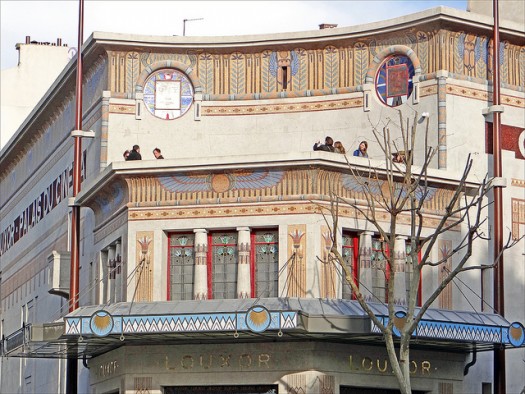Louxor – Palais Du Cinema
Posted on May 16, 2010 by VINGT Editorial
Text: Aidan Mac Guill
Image: Jean-Pierre Dalbéra
On the corner of Boulevard de la Chapelle and Boulevard de Magenta, at the heart of noisy, relentless Barbès, stands a building. Amidst the clatter of the overground metro and the chatter of the traders lining the market below, and the unnatural din that emanates from the bazaars, cafes, stalls and kebab shops, and endless crowds of passers-by, the quiet of this battered monument is remarkable. No trace of its former glory remains, seemingly, until the sun breaks through the April storm clouds and lights up the golden tiles of a faded Egyptian facade. Floral scarabs and cobras lead the eye past a giant winged disc above the entrance to the relief on its far side, which reads, in magnificent art-deco lettering ‘LOUXOR – PALAIS DU CINEMA‘.
Designed by the architect Henry Zipcy, the Louxor first opened its doors on October 6, 1921, more than a decade before Le Grand Rex in the 2nd or La Cigale in the 18th. Inspired by the archaeological discoveries making headlines in the French press at the time, the flagship cinema of the Pathé chain was built in an Egyptian art-deco style. The facade outside was mirrored inside by murals depicting Egyptian scenes, hieroglyphics, plants and papyrus leaves. Two balconies overlooked the seats, orchestra pit and stage below. Its curious appeal made the cinema popular in early years.
However, despite the introduction of sound, colour and CinemaScope, by the mid-Fifties audience numbers began to decline. In the Seventies the decision was made to program an increasing number of Indian and Arabic films in ‘Version Originale’. Paris was changing, and the cinema originally created to amuse French-born Parisians with a glimpse of the exotic was now actively seeking to attract the increasing numbers of immigrants arriving from these far-away lands and settling in areas like Barbès. Nevertheless, the cinema continued to struggle financially. In 1981, as various renovations were being carried out to the interior, the roof and facades were listed in the Inventory of Historic Monuments after a public campaign. The final years of the Eighties were marked by rapid decline; a murder took place in the stalls and Pathé sold the building to the bargain-store Tati. It briefly became the home of ‘Megatown’, a gay nightclub, and became increasingly associated with drugs, criminality and prostitution. In 1990, it was closed and left deserted.
In 2003, after a concerted local campaign, the Marie de Paris purchased the site. A program of restoration was begun under the direction of architect Philippe Pumain, resulting in the reopening of the Louxor as an art-house cinema in 2013. The main hall and its murals were restored, and the original balconies replaced with faithful replicas. The stage was removed and two new multi-purpose rooms have been created in the basement. A cafe and terrace were also created on the roof overlooking the entrance. Modern features like disabled access and sound-proofing have helped restore the cinema beyond its former glory.
Le Louxor
170 Boulevard de Magenta, 10th
Ph: 01 44 63 96 96
Metro: Barbès-Rochechouart (2, 4)

